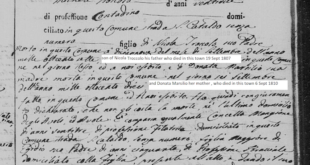Very few people even know it exists. A national museum of timeless and exceedingly valuable treasures sits relatively unviewed and unappreciated in suburban Chicago. Over 100 pieces of incomparably vibrant and colorful porcelain statuary, created by one of Italy’s and the world’s most renowned sculptors, are housed in suburban Northlake, thousands of miles from bustling Milan, where they were painstakingly created by the hands of Antonio Borsato.
Located inside Casa San Carlo Retirement Community, 420 N. Wolf Road in Northlake, the National Borsato Museum is a familiar site for staff and the nearly 200 residents.
 “We feel it is such a treasure that the public should know that it’s here. Not only is it the only one in the area, but it is one of the largest collections by far,” said Sr. Elizabeth Trem, CSFN, Executive Director of Casa San Carlo, who is always excited about welcoming the community to view the collection, which includes 107 of the best pieces ever sculpted by Antonio Borsato. When Casa San Carlo was owned by Catholic Charities, it received a gift of 104 Borsato pieces from the Museum’s founder, Northlake-based attorney Favil David Berns and the Museum was officially opened in August 1990. At that time, Berns was quoted as saying, “The Borsatos are artistic works of love and needed a good home. What more suitable home is there for Italian sculpture?” The late Cardinal Bernardin blessed all of the artwork at the dedication, attended by more than 1,000 people.
“We feel it is such a treasure that the public should know that it’s here. Not only is it the only one in the area, but it is one of the largest collections by far,” said Sr. Elizabeth Trem, CSFN, Executive Director of Casa San Carlo, who is always excited about welcoming the community to view the collection, which includes 107 of the best pieces ever sculpted by Antonio Borsato. When Casa San Carlo was owned by Catholic Charities, it received a gift of 104 Borsato pieces from the Museum’s founder, Northlake-based attorney Favil David Berns and the Museum was officially opened in August 1990. At that time, Berns was quoted as saying, “The Borsatos are artistic works of love and needed a good home. What more suitable home is there for Italian sculpture?” The late Cardinal Bernardin blessed all of the artwork at the dedication, attended by more than 1,000 people.
“People are always welcome to come to see the Museum,” added Sr. Elizabeth. “We are open seven days a week and someone is always here that can show them the Museum.” While appointments are preferred, anytime is the perfect opportunity to celebrate the gift of Borsato’s intricate and expressive work as well as the gift of Berns’ great generosity. A wide selection of subject matter is represented, from street vendors to inspirational religious themes, including the Annunciation, the Stations of the Cross, the Piety and Moses (displayed on the first floor of the Casa). Several of the original tools used by Antonio Borsato are also on display within the Museum.
Borsato, born in 1911, studied at the Academy of Fine Arts in Venice and began developing his own techniques while working mainly on religious themes, such as the Madonna and Child and Nativity sets. At his studio in Milan, he began to create his statuary from a combination of soft porcelain and stoneware known as gres. Through this process, Borsato was able to accentuate great detail in the faces, hair and fingers of his subjects. When these new creations were displayed at the Milan Trade Fair in 1949, the public was not impressed — perhaps because they were unfamiliar with such intricacy. But the export market put Borsato’s inimitable talent on the map and his work became sought after in the United States.
Focused on mastering his techniques, he continued creating in porcelain and perfecting the porcelain process. By 1980, Borsato’s name had become well-known by admirers of Hummel, Dresden, Meissen. With the rise of his popularity came the construction of a new factory in Milan, outgrowing his small studio and requiring the help of his wife and daughter. Tragically, as Borsato reached this high point in his career, he died in an auto accident in 1982, leaving 700 models of porcelain pieces and approximately 200 models of his older gres figures. His wife, daughter, son-in-law and grandchild continued his work to honor his legacy.
“The National Borsato Museum is a best-kept secret but we’re intent on sharing it. It’s just one more thing to love about the Casa,” added Sr. Elizabeth, who jumped at the opportunity to serve as Executive Director. “When I received the invitation to accept this assignment, I took it readily because the Casa is such a beautiful place in so many ways. From the grounds, to art pieces throughout the building, to the Museum, to the lovely residents,” everyone is amazed by Casa San Carlo.
Anyone who is interested can arrange a tour of the museum by calling 708-562-4300.
 Fra Noi Embrace Your Inner Italian
Fra Noi Embrace Your Inner Italian







